Applied Artificial Intelligence Conference
Applied Artificial Intelligence Conference Hosts First Virtual Event With Ease
ICT
Innovation Partnering
Virtual
:no_upscale()/https://cdn.b2match.com/uploads/Applied_Artificial_Intelligence_Conference_1120x450_d0370f2fc9/Applied_Artificial_Intelligence_Conference_1120x450_d0370f2fc9.png)
May 29, 2020 | 11 min read
This Year, It’s Going to Be a Virtual Event
For the third time in a row, the Applied Artificial Intelligence Conference (AAIC) 2020, organized by Advantage Austria, took place with one difference. It was a virtual event.
b2match interviewed Matthias Grabner, event organizer and director of technology at Advantage Austria, and asked which challenges he faced and what his experiences were. The citations throughout this article are from the interview with him.
“Initially, we planned to host the 2020 conference just like the years before, as a physical event here in Vienna, Austria. But because we have a very international speaker line-up and due to COVID-19, we were forced to take action.”


As the name suggests, the conference was all about how real-world businesses can make use of AI. To address this topic, the conference hosted keynotes from international experts, hosted deep diving workshops, and provided a forum to connect developers of AI solutions with potential end-users from all industry sectors. View the event agenda here.
“We already had the idea to switch some of our events to virtual, but we did not really take action. The current situation was the tipping point we needed, to finally give it a go and try it out.”
In this short video the organizers briefly describe what the conference was all about:
Planning for the Unknown
b2match asked, "Why did you choose a pivot to a virtual event, instead of postponing it?"
Matthias Grabner answered, “First of all, for us, it was important to be proactive, not reactive. We considered postponing our event, but a lot of organizers chose to do the same, so (probably) a lot of events are going to take place in September/October. This will stress out attendees, and it is likely to impact the attendance of postponed events negatively.
Additionally, due to the topic of the conference, it just seemed like the ideal case to try hosting it as a virtual event. The idea behind this whole conference is to showcase how a rather theoretical topic (AI) can be practically implemented. So we saw ourselves as organizers, responsible to live up to what’s at the core of our conference, to be innovative, and apply a new solution for our own conference.”
After the decision for a pivot to a virtual event had been made, the challenge itself was to create a virtual counterpart for the conference. The virtual event agenda consisted of three elements:
- Keynotes from industry experts
- Workshops on specific topics
- Connect developers of AI solutions with industry end-users
Those elements also had to be the focus points of the online event conference.
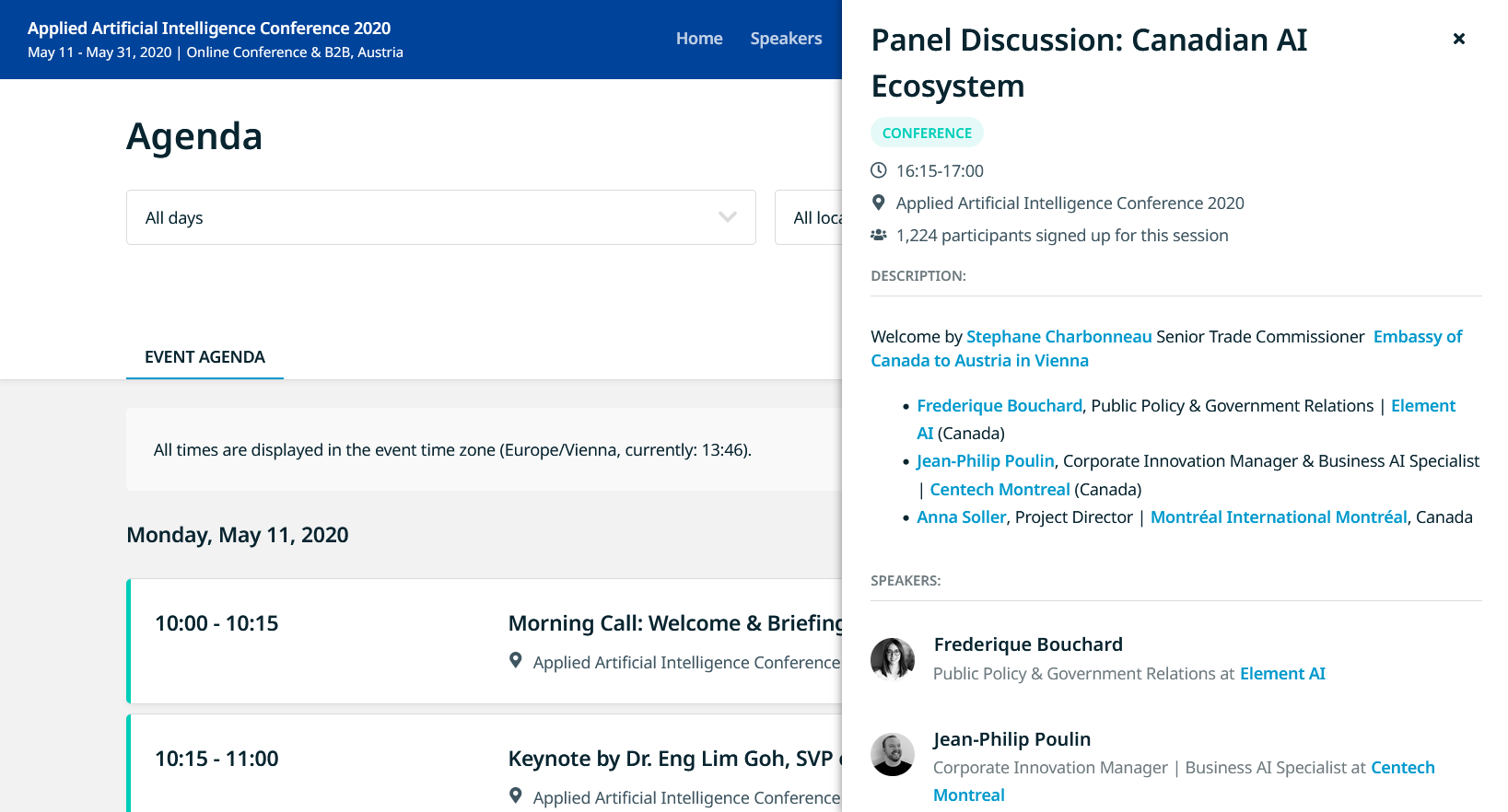

One might think that a virtual event is easier to organize than a physical event, and the challenges are easily solved when you just use the right tool. When b2match asked the organizer about comparing the planning process of a physical event versus a virtual event, Matthias Grabner said:
“It is more flexible, you can implement stuff faster, you actually have more free resources and the entire logistics planning related to the physical event (like the location, catering, etc.) can be omitted.”
Apparently, it seems to be easier to have a virtual event. But, the entire workflow is turned upside-down.
“You as an organizer, have to adapt the same flexibility which comes with the online-only setup. The response time you have for interventions during the event is drastically reduced. You have to be more agile. There are a lot of currently unknown factors.”
b2match asked, “What are those unknown factors for a virtual event?”
Matthias Grabner said, “It starts with a good streaming set-up. This topic is not as trivial as it seems to be, and I guess it is an unknown topic for many other event organizers and they don’t have the technical know-how to do it properly.
Additionally, how can I make sure the internet connection of my speaker line-up is good enough? How do participants behave during the virtual event and what kind of interventions could be needed during the event?”
b2match asked, “How do you approach those factors?”
Matthias Grabner responded with, “For the streaming set-up and quality testing of the speaker line-up connections, we did hire a third-party organization. Even though we would have the knowledge to technically solve those factors, it gives a great peace of mind to know that experts are there to back you up.
For the interaction with the participants during the virtual event, we are in close contact with all our keynote speakers and make sure that interactivity gets prioritized. This is important because, when you think about it, interactivity is really the only thing that differentiates those keynotes from ted-talks or something else. And most importantly, we make sure that our team can react and take action as fast as possible.”
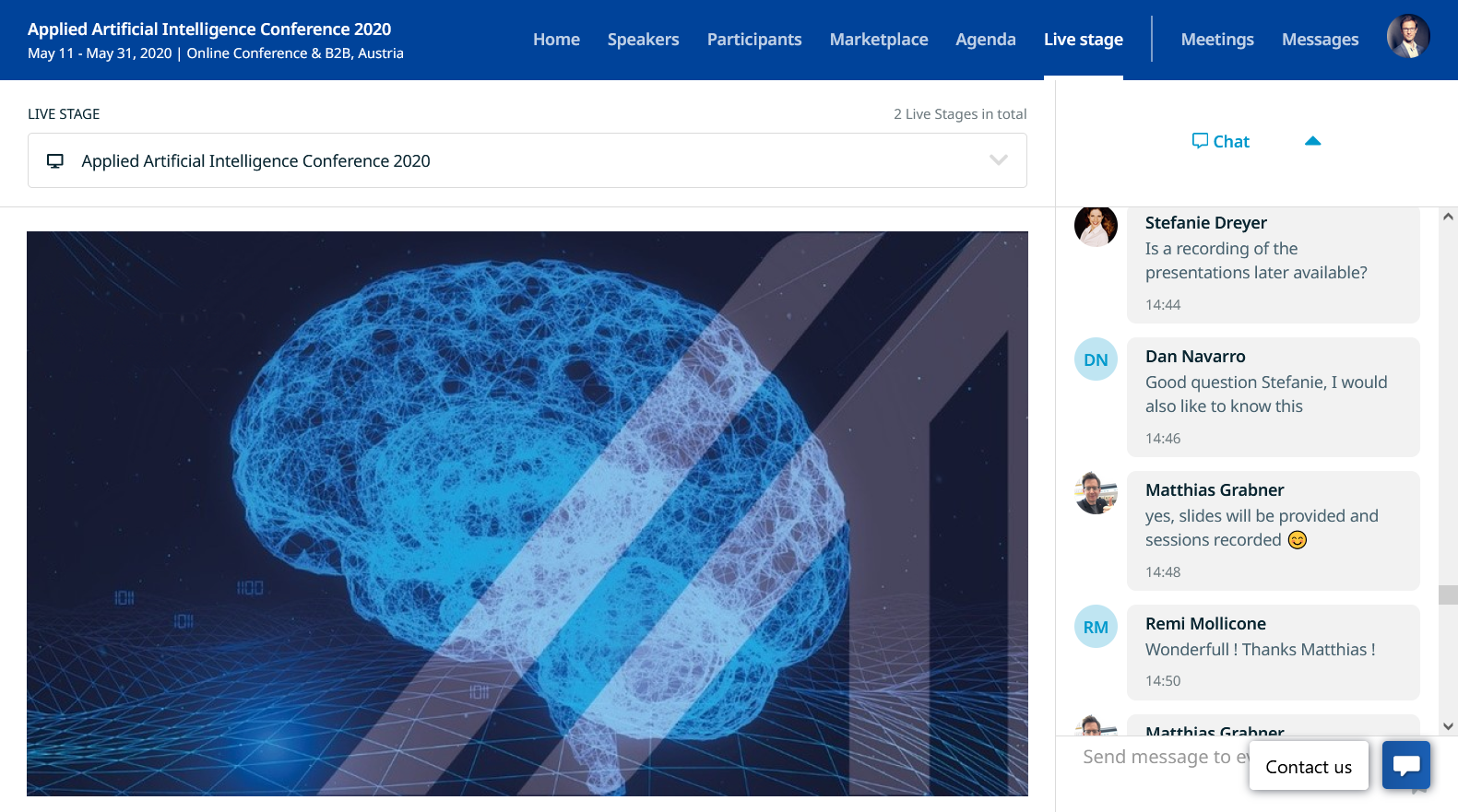

Choosing the Virtual Event Networking Platform
Matthias Grabner said, “We did look at a lot of different event networking software solutions out there because we had to make sure that we could deliver our services. Additionally, we always get input from our worldwide offices, telling us about their good and bad experiences with platform providers being used in their part of the world.
Anyway, a couple of reasons did lead to our decision to use b2match for this event. We know how well the networking and b2b matchmaking functionalities work, like the detailed profile set-up, the listings of “searching for” and “offering” opportunities in the marketplace, and the smooth meeting scheduling.
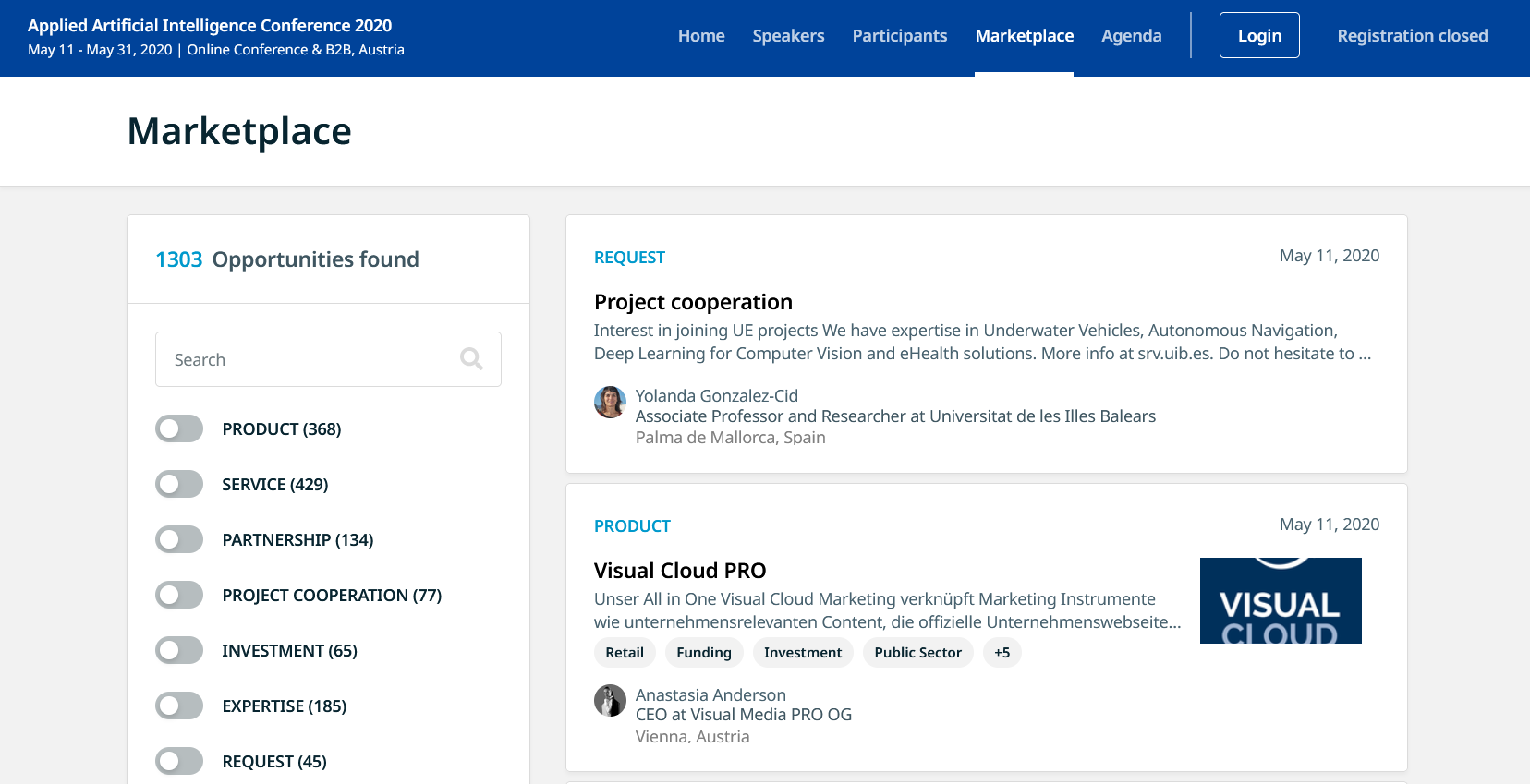

Nobody else has worked out those features so well, and we can’t sacrifice on this. Additionally, the new virtual and hybrid event solution allows us to create a virtual version of this event, which is what we were looking for.”
The first part of the b2match virtual event networking platform makes it possible to broadcast the event program and engage the audience online. Two of the three elements, namely the keynotes and workshops of the conference are covered by a two-sided approach:
- Through an integrated broadcasting for live-sessions/workshops up to 100 participants
- Incorporation of any third-party streaming provider and embedding links to the virtual rooms directly into the agenda sessions
The second part of the event platform enables the event organizers to provide a forum, where developers of AI solutions can connect with industry end-users, and let them meet virtually.
Smart and customizable business networking of the platform enables participants to easily identify relevant meeting partners, and schedule meetings with them.


Those meetings are then taking place, through 1:1 video meetings, which enable participants to have their scheduled meetings remotely. It is fully integrated into the platform, so participants can meet online with just one click. No additional software installation or account setup is needed.
First Virtual Networking Event: An Experiment That Turned Out to Be More Than Successful
Matthias Grabner said, “Taking the event virtual was an experiment, and we are more than satisfied with the outcome.”
The success of AAIC 2019 vs. 2020 in numbers
| - | 2019 AAIC | 2020 AAIC | % CHANGE | | ------------------------------------------- | --------- | --------- | ----------- | | Total participants | 499 | 2401 | +381 % | | Share of international participants | 148 | 1800 | +1000 % | | Countries represented | 27 | 81 | +200% | | Participants available for 1:1 meetings | 260 | 1138 | +337 % | | Arranged 1:1 meetings | 314 | 1102 | +250 % | | Collaboration Opportunity listings | 268 | 1343 | +401 % |
Note: numbers compared to last year's physical event, taken from the event websites (2019) & (2020).
Matthias Grabner said, “A huge amount of top-class participants from all over the world registered for our conference. Everyone did actively engage in networking, the virtual meetings were highly sought after, and participants were excited about the efficiency of the networking.”
A New Event Format Means New Challenges
Without any prior experience in organizing virtual events, Matthias Grabner and his team from Advantage Austria knew they would face some new challenges.
Topics of concern that were addressed a few weeks before the virtual event were:
- How to build a proper streaming setup?
- How do participants behave during the virtual event?
- What kind of interventions could be needed during the virtual event?
Even though the virtual event was a huge success and the participant satisfaction spiked, b2match was interested in the actual challenges that did come up and the friction that Matttias Grabner experienced due to the new event format.
Last-minute registration of participants
Approximately ¼ of participants did register one day before and during the event day itself.
For those last-minute participants, it is hard to make sure everyone has a sound understanding of the possibilities the event provides and how to make use of them. Some participants do not realize what networking features an event organized with b2match provides them. So it is likely that a share of participants will not be able to enjoy the event with all its benefits, just because they lack the time to properly get used to the possibilities and functionalities.
b2match asked, "How can other organizers prepare for this?"
"The best approach is to provide crystal clear documentation on the virtual event website itself, outlining what possibilities participants have during the event, and how to make use of them. Additionally, enabling the networking even after the event is over can be a gamechanger,” Matthias Grabner said.
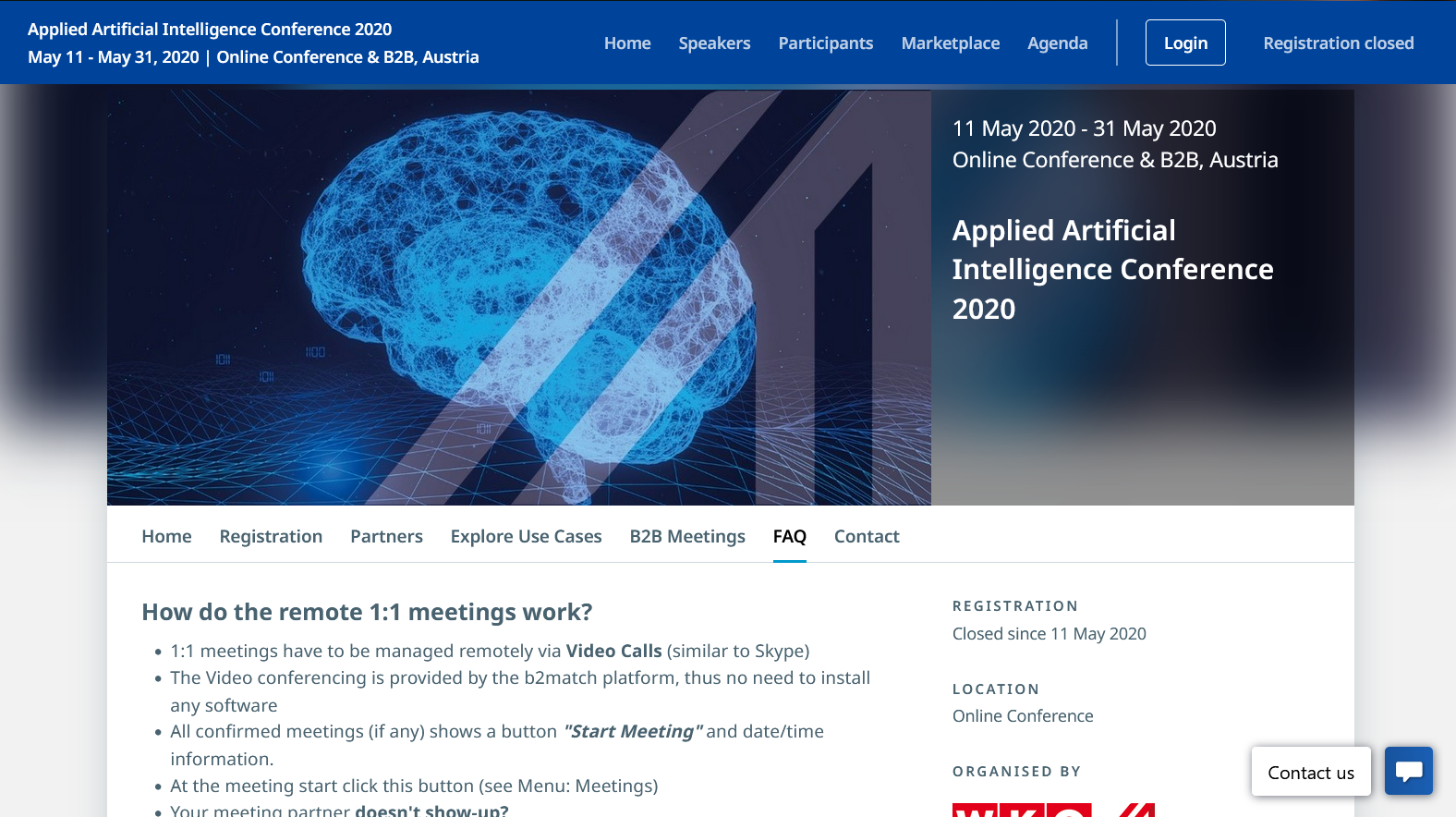

The lack of digital competence of participants
A factor that the organizer can hardly influence, but which is likely to appear during any virtual event - even the ones dealing with a highly technical topic like AI. As Matthias Grabner put it:
“When someone does not manage to activate the microphone for the virtual meeting, having a good meeting with this person is just not possible. One way to counteract this is by educating the participants. Make sure you as an organizer communicate that every participant should test the basic functions, so the virtual meetings run smoothly.”
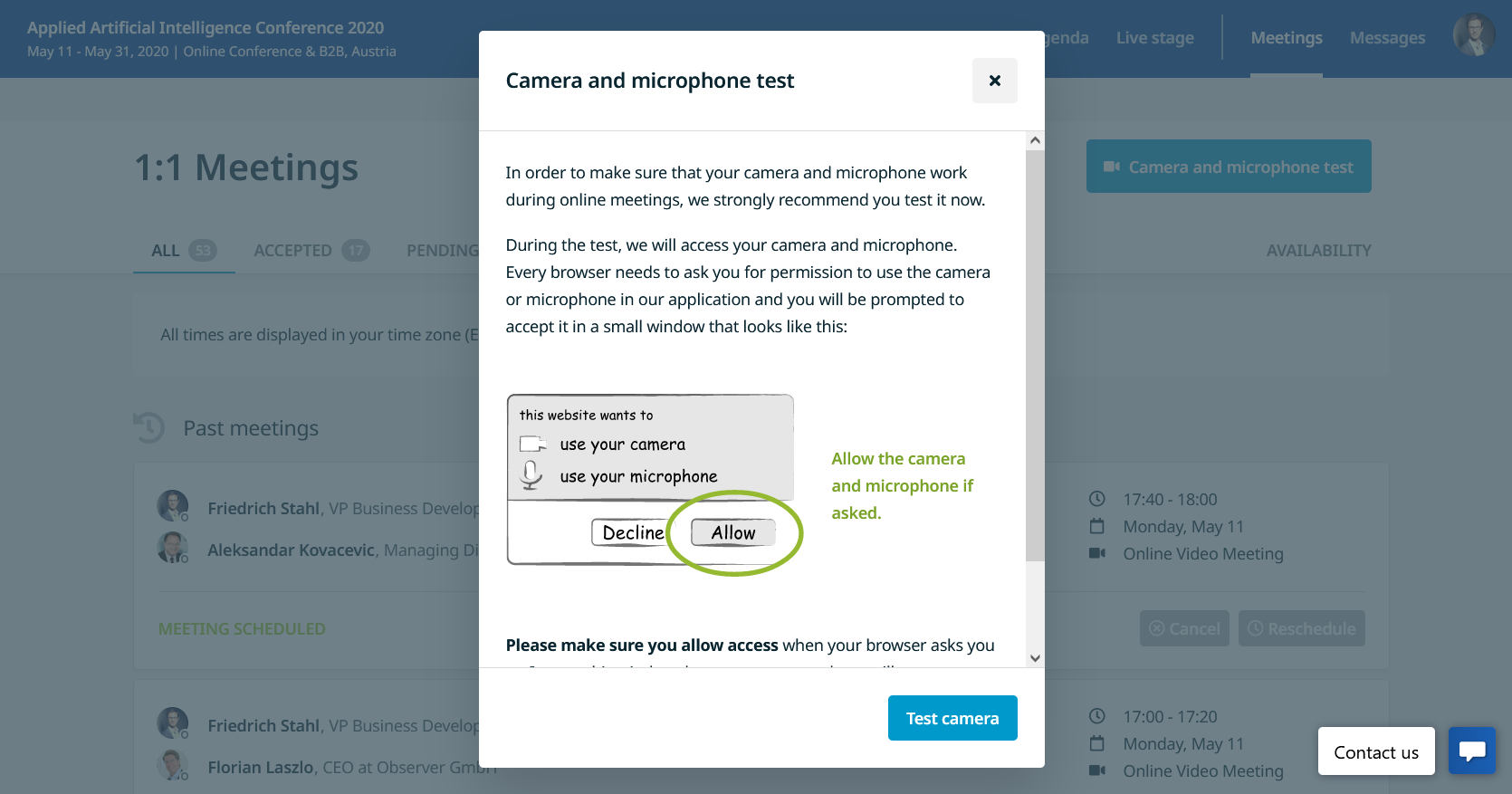

The streaming (program) setup
During the first hour of the event program, all of a sudden the streaming audio broke, and it was unclear if the 10 hours of planned keynotes with international industry experts could continue.
It is well worth to mention that the technical setup was a topic the organizing team was highly aware of. Thus, they did hire a third-party provider to set up the streaming. However, a hardware failure of the audio mixer (broken cable) led to an interruption of the program.
“Online, participants are less understanding and forgiving when it comes to this kind of error,” Matthias Grabner said.
Luckily, the error could be identified and solved within just a single hour. To get back on track, the organizers did cut off a plenary discussion at the end. An ad-hoc update of the agenda combined with notifications informing the participants what had happened and changed, ensured the impressive program could continue smoothly.
Matthias Grabner said, “We received a few complaints from participants, why we didn’t prepare better. But the fact that we did hire professionals and they did bring a second audio-mixer, was the best possible preparation.
Most importantly, test everything beforehand. And most importantly, have a backup plan. Even though you will detect any issues during a test-run, such things as upcoming hardware errors will still be off your radar.”
- Prepare a maintenance screen which you can display
- Even better are pre-recorded videos which you can display in the case of an issue
To sum it up, there obviously were some virtual event challenges. A few of them were more anticipated than others, but all of them were solved. This can be concluded from the extremely positive feedback that the organizers received.
Participants were full of praise for the unexpected networking possibilities and their efficiency, such as for the value the event offered.
“We received emails from participants asking us to do more of this kind of event. They were stunned by the value the event did bring them,” Matthias Grabner said.
What We Learnt From Creating a Virtual Networking Event
Apart from the preparations mentioned above, other event organizers can learn from the experience that Matthias Grabner and his team had from the process of doing their first virtual event. b2match asked what the key learnings and most important takeaways are.
What worked well:
- Let the registration be open as long as possible (until the day of the event)
- Invest time to create incentives. For us, the representative keynotes were a strong pull-factor.
- Make sure you have responsible people to:
- Communicate with the speakers (collect all their numbers beforehand)
- Communicate with the participants (chat, email, push-notifications)
- Prepare a back-up plan (maintenance display, pre-recorded videos, draft email templates)
- Delegate as much as possible to professionals (e.g. streaming set-up)
What he would do differently next time:
- Narrow down the topic of the virtual event. Instead of having one big event covering everything, with virtual events you can address long-tail topics and easily create more smaller events, for a more specific audience.
The most surprising was…
“The top-class end-users we could reach. The virtual event does not know any borders and the hurdle of traveling somewhere else disappears. Thus, we saw exceptional top-class end-users from all over the world.”
The Future of a Virtual Event Strategy
“I honestly consider prospective AAIC’s to be virtual only!” Matthias Grabner said.
“Even though you might think that virtual events come with less of a planning workload, this is not true. They are exactly the same amount of work. But on top of the fantastic outcome, they are cheaper for us to organize and not to forget, environmentally friendly.
The virtual events are going to be an established part of our event planning. Of course, you have to consider which events exactly because they are best suited for really operational ones, where it is not mainly about promoting an image and getting nice pictures, but about doing business with each other.
“Further, it is likely that we are going to extend our physical events (once they can take place again), to hybrid events.”
Conclusion
b2match was extremely happy that the Applied Artificial Intelligence Conference 2020 went so well and is more than excited to see it become a virtual event superstar.
Thank you Matthias Grabner for the devoted time and valuable insights, which hopefully serve a lot of other event organizers out there as well.
The Virtual Event Management Solution
The b2match virtual event networking solution lets you create an engaging virtual experience for your audience to network, connect, and collaborate.
Explore new business opportunities, run events virtually across the entire globe, or incorporate hybrid events into your physical event.
Event organiser:

ADVANTAGE AUSTRIA is Austria’s trade promotion organization and part of the Austrian Federal Economic Chamber (WKO)
Event in numbers:
2386
Total participants
47%
Participants in matchmaking
1018
1:1 Meetings
81
Countries
Visit Event Website